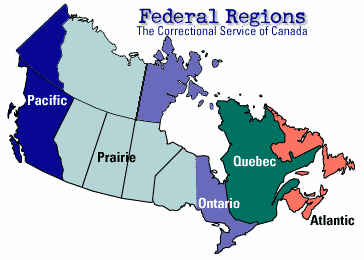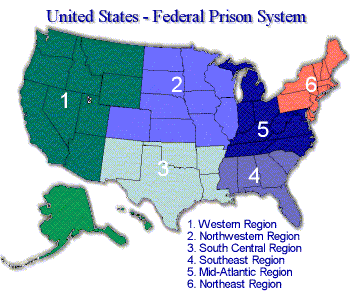| Unit.D.3.1.
Criminal Justice System |
[Unit.B.3.1.]
[Unit.C.3.3.] [Unit.D.3.1.]
|
Historically
the evolution of prison health care has paralleled the mission
and policy statements of the correctional services in respected
countries with regard to punishment and treatment philosophies.
An understanding of the history of corrections helps us
to understand how health care services have evolved in prison
settings over time.
 Australia
Australia |
focus
points
|
 |

 Canada
Canada |
focus
points
|
 |

(CSC)
Correctional Service Canada: administers 41 federal
penitentiaries, 16 community based correctional facilities,
65 parole offices and 14 district offices. Responsibility
for corrections in Canada is shared by federal, provincial
and territorial governments (Correctional Service Canada,
1994).

Correctional
Service Canada Mission Statement. The Correctional Service
of Canada (CSC), as part of the criminal justice system,
contributes to the protection of society by actively encouraging
and assisting offenders to become law-abiding citizens,
while exercising reasonable, safe, secure and humane control
(CSC, 2000).

"The objective of health care in prisons was to provide
for offenders the same level of care as available to the
citizen in the community"(Lehman,1983, p. 37).
"In the old system, health care officers provided the
minimum of health care, mostly first aid. Many people think
that prison nursing is one of the last frontiers" (Lehman,
1983, p. 37).

"Health
services described as community health service: John Savrtka
a nurse who worked at Drumheller Penitentiary since it opened
in 1967 described the health services in the following manner
in 1971 - "It's not just a hospital, its more of an
outpatient approach. It' like a community health service
- except the community is bounded by a seventy foot fence
and all the patients are men" (Norens, 1971, p. 37).
"The guiding principle of the Drumheller Penitentiary
focuses on endorsing a sense of confidence, self-respect,
and dignity for prisoners" (Norens, 1971, p. 37).

"In
October, 1996 there were 37,541 inmates registered in the
48 federal and 151 provincial prisons. A profile showed
that the average prisoner in the federal system was a man
in his early 30s, with women making up only 5% of the inmate
federal population. The majority o f inmate (86%) were repeat
offenders and about half were considered a high risk to
re-offend. Nearly half of the federal inmates had a grade
9 education or less, half were unemployed at the time of
the arrest for which they were serving time and 17% were
aboriginal" (Statistics Canada, March 17, 1999).
 International
International |
focus
points
|
 |
Insert forensic
focus points here
 United Kingdom
United Kingdom |
focus
points
|
 |

"The
development of the English Prison Medical Service commenced
with the establishment of the Prison Commission in 1877"
(Polczyk-Przybyla & Gournay, 1999, p. 896).

Her
Majesty's Prison Service serves the public by keeping in
custody those committed by the courts. Our duty is to look
after them with humanity and help them lead law-abiding
and useful lives in custody and after release (HM
Prison Service, 2002).
Martin
Narey, Director General for the HM Prison Service for England
and Wales States that Prison is an unfortunate reality for
over 70,927 of our citizens at any time, who are cared for
by 44,000 staff in 138 prisons (HM Prison Service, 2002).
Her Majesty's Prison Service. (2002). Retrieved July
2, 2002 from http://www.hmprisonservice.gov.uk/
 United States
United States |
focus
points
|
 |
United States
Federal Bureau of Prisons

The
United States Federal Bureau of Prisons: The correctional
system in the United States is diffuse and differentiated
among a variety of jurisdictions at the federal, state,
and local levels. The Federal Bureau operates 81 institutions
as of 1995 (Federal Bureau of Prisons, 1996).

The
mission of the National Commission on Correctional Health
Care is to improve the quality of health care in jails,
prisons and juvenile confinement facilities. With support
from the major national organizations representing the fields
of health, law and corrections, NCCHC's leadership in setting
standards for health services is widely recognized. Building
on that foundation, our not-for-profit organization offers
a broad array of resources to help correctional health care
systems provide efficient, high quality care (NCCHC, 2002).

"The
1970's saw revolutionary changes in the organization and
delivery of health care to inmates in prisons and jails.
It is generally recognized that the impetus for this came
from class action suits brought about by inmates who sought
redress, for the inadequate or unsafe health care which,
they charged constituted a denial of their constitutional
rights" (Chaisson, 1981, p. 737).
"Inadequate health care is considered cruel and unusual
punishment, which is prohibited by the Bill of Rights"
(Chaisson, 1981, p. 737).
"The 1970's saw a rapid increase in the corrections
health care literature, from 6 to 10 articles in 1973 to
hundreds of publications on the subject in 1979" (Chaisson,
1981, p. 737).
"Correctional institutions contain a population with
long neglected and multiple health care problems" (Chaisson,
1981, p. 738).
"It is generally agreed that the biggest single health
care question in corrections today is, "How to provide
mental health services"" (Chaisson, 1981, p. 738).
"The health care delivery system in correctional institutions
is in a take-off position to skyrocket out of the dark ages
into the light of consumer oriented technical era. The resultant
rapid and revolutionary changes hopefully will challenge
health care professionals to help shape the new frontier"
(Chaisson, 1981, p. 738).

"Correctional
health services represent a substantial segment of the nation's
health care, with almost 4 million adults on probation or
parole, and more than 5.5 million people, 2.8% of the US
adult population under some form of correctional supervision,
including those held i n local jails and state and federal
prisons" (US Department of Justice, 1997; cited in
Goldkuhle, 1999, p. 38).

"The American public overall had little sympathy for
those who were incarcerated and even less interest in spending
scarce public resources on them. Many jurisdictions were
unwilling to provide the resources necessary to bring health
services up to minimum standards" (Moritz, 1982, p.
253).
"The
courts, however recognized that health care is a constitutional
right, not a privilege, for those incarcerated and that
it should be comparable to the standard in the community
in which the correctional facility is located" (Dubler,
1979, cited in Moritz, 1982, p. 253).
"The nursing standards recognized the right of all
people to have adequate health care and were based upon
principles, that ensure the incarcerated have access to
nursing services; that health care cannot be compromised
by detention or incarceration; that health care can be provided
in an atmosphere which fosters dignity and reinforces the
worth of both the individual and the health professional,
and that health services be the direct function of health
professionals" (New York State Nurses Association,
1980, cited in Moritz, 1982, p. 254).
"Nurses are employed at all levels: federal, state
and local to provide nursing services, and in many instances,
to manage the health services in correctional systems"
(Moritz, 1982, p. 254).

The
prison bureau employs 625 nurses, primarily at its five
medical centers, but also at clinics at its penitentiaries,
detention centers, and federal correctional institutions.
The bureau's 100 facilities serve 126,000 inmates, a population
with a net growth of 10,000 inmates per year (Osten, 2002,
0Federal Bureau of Prisons, 2002).

"There
are 1.875 million people in custody in the US prison system
(federal, state, and local institutions) and that number
is growing at a clip of about 5% a year. Over taxed US governments
are increasingly turning to the private sector to build
and run prisons" (National Post, Aug 14, 1999).

"New
York's city jails and New York States Prison Systems alone
hold approximately 89,000 people at any one time" (Storey,
Woods, Bradshaw, & Landsberg, 1999, p. 371).
"The 17 New York City jails and houses of detention
take only prisoners serving sentences of less than a year,
and prisoners whose home is in the city who have been transferred
from State institutions prior to release. Longer sentences
are served in the State Prisons" (Storey, Woods, Bradshaw,
& Landsberg, 1999, p. 371).
"According
to official statistics, between 125,000 and 130,000 individuals
pass through the New York City jails in the course of a
year. The jails accommodate approximately 15,000 to 20,000
inmates at any one time" (Storey, Woods, Bradshaw,
& Landsberg, 1999, p. 371).

"US
Federal prisons deal with federal charges against country.
US State Prisons are mandated for state charges. Sentences
can be long or short in both. In the US, the murder of another
person can be served in a state penitentiary, whereas in
Canada they would be sentenced to a federal prison"
(John Roberts, 1997, Archivist, US Bureau of Federal Prisons).
Focus Points
Reference
| Correctional
Service Canada, (1994). Correctional |
Service
Canada, Ottawa: Author.
|
| Her Majesty's
Prison Service. (2002). Retrieved July 2, |
2002
from http://www.hmprisonservice.gov.uk/
|
| Her Majesty's
Prison Service. (2002). Statement of |
Purpose.
Retrieved July 2, 2002 from http://www.hmprisonservice.gov.uk/
|
| National
Commission on Correctional Health Care. |
(2002)
Homepage - Mission. Chicago, IL, USA. Retrieved
May 16, 2002 from NCCHC Website: http://www.ncchc.org
|
| Osten,
J.A. (2000, September). Spotlight on |
correctional
facilities nursing. (Brief Article). Nursing Library.
Retrieved July 14, 2002 from http://www.findarticles.com/cf_dls/m3231/9
_30/65801794/p1/article.jhtm
|
| Polczyk-Przybyla,
M. & Gournay, K. (1999). Psychiatric |
nursing
in prison: The state of the art? Journal of Advanced
Nursing, 30 (4), 893-900.
|
Top
of Page